Silicon Motion SM2256 SSD Controller Preview: TLC for Everyone
by Kristian Vättö on June 17, 2015 8:15 AM EST- Posted in
- Storage
- SSDs
- TLC
- Silicon Motion
- SM2256
AnandTech Storage Bench - The Destroyer
The Destroyer has been an essential part of our SSD test suite for nearly two years now. It was crafted to provide a benchmark for very IO intensive workloads, which is where you most often notice the difference between drives. It's not necessarily the most relevant test to an average user, but for anyone with a heavier IO workload The Destroyer should do a good job at characterizing performance. For full details of this test, please refer to this article.
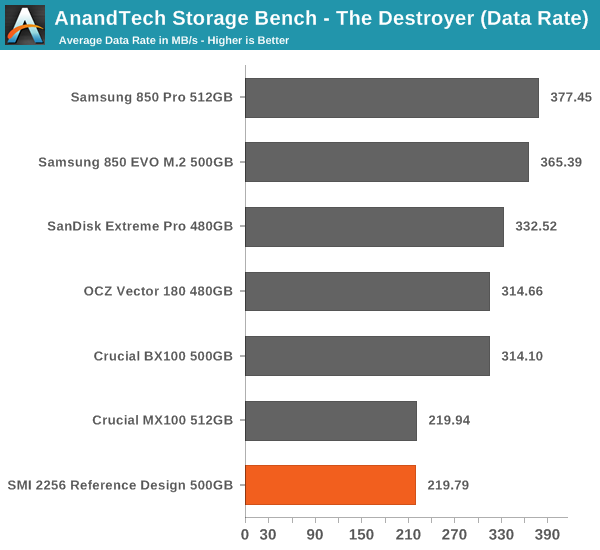
Under a very intensive IO workload, the SMI 2256 is a mediocre performer. Average data rate is high, which suggests good performance at large IO sizes, but the average latency is considerably higher than what MLC drives and the 850 EVO have to offer. Then again, TLC is slower than MLC and 3D TLC, and that's a fact that no controller can get around. Ultimately TLC drives, at least at first, will be more aimed towards typical client workloads anyway, which aren't really illustrated by The Destroyer.
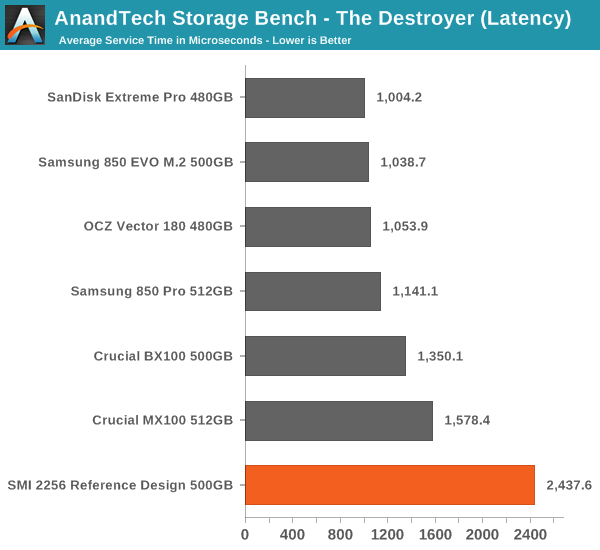
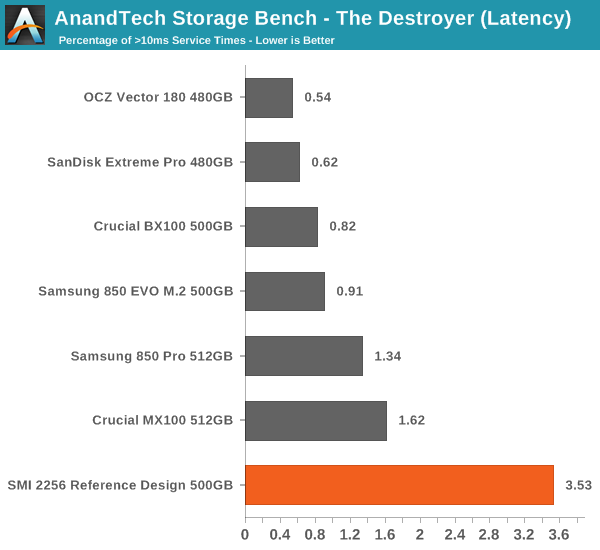
The number of high latency IOs is substantially higher than in the SM2246EN, but at 3.5% it's not alarming especially because the share of >100ms IOs is very moderate and not any worse than MLC drives.
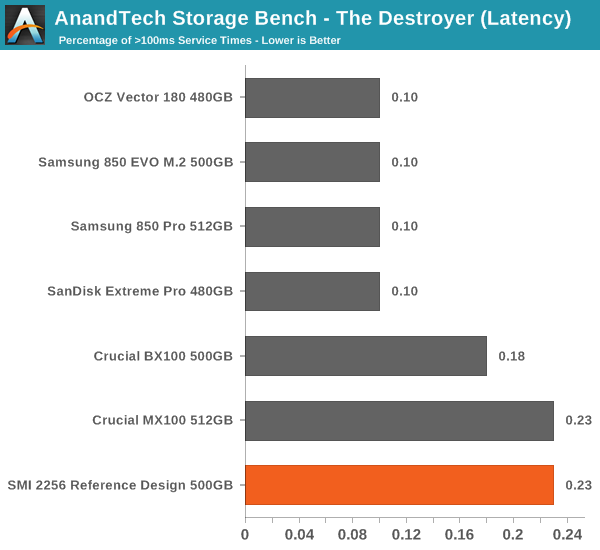
One of the inherent issues with TLC that nobody is talking about is increased power consumption, which our testing proves. TLC requires a higher number of program pulses to program the correct voltage, resulting in longer total program time as well as increased power draw. In addition, SLC caching means that all data essentially gets written twice, which obviously adds power draw despite SLC programming being much more power efficient.
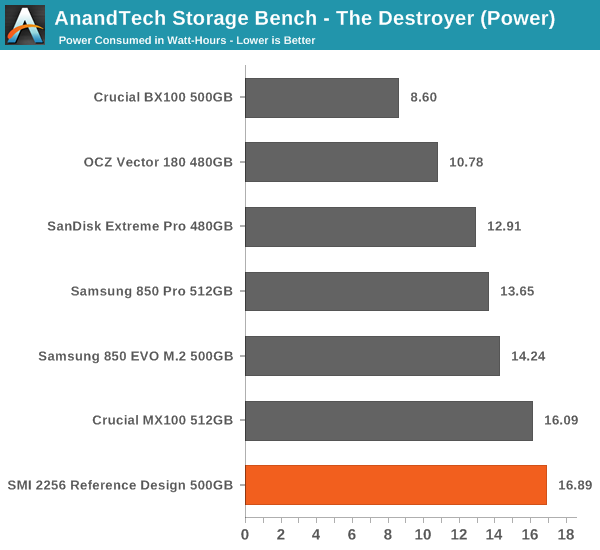










34 Comments
View All Comments
Oxford Guy - Saturday, June 20, 2015 - link
Apple reportedly abandoned TLC because of the defects.serndipity - Saturday, June 20, 2015 - link
Have noticed that, as the NAND manufacturers shrunk the die process, issues with both MLC and TLC based SSDs have begun surfacing.Glad to see that Samsung, with its 3D NAND technology, used in the 850 PRO and 850 EVO, has been able to return to a much more stable process size (e.g. almost 3X that of current MLC).
viktorp - Thursday, July 2, 2015 - link
TLC NAND isn’t welcome at any price.Ask yourself simple question – what parts of your personal data will you trust to storage designed specifically to have 10 times less endurance than technology it is supposed to replace (MLC).
I am upset just thinking that someone thought of it as being a good idea.
cbjwthwm - Thursday, September 3, 2015 - link
The big problem here is a newer gen product at 2x the capacity of the equivalent architecture Sandisk Ultra II which for the most part gets outperformed by it. It would be interesting to see what the shipping firmware of this type of product eventually performed like compared to the reference design, but otherwise I see no reason to consider this vs the Marvell-based Ultra II.